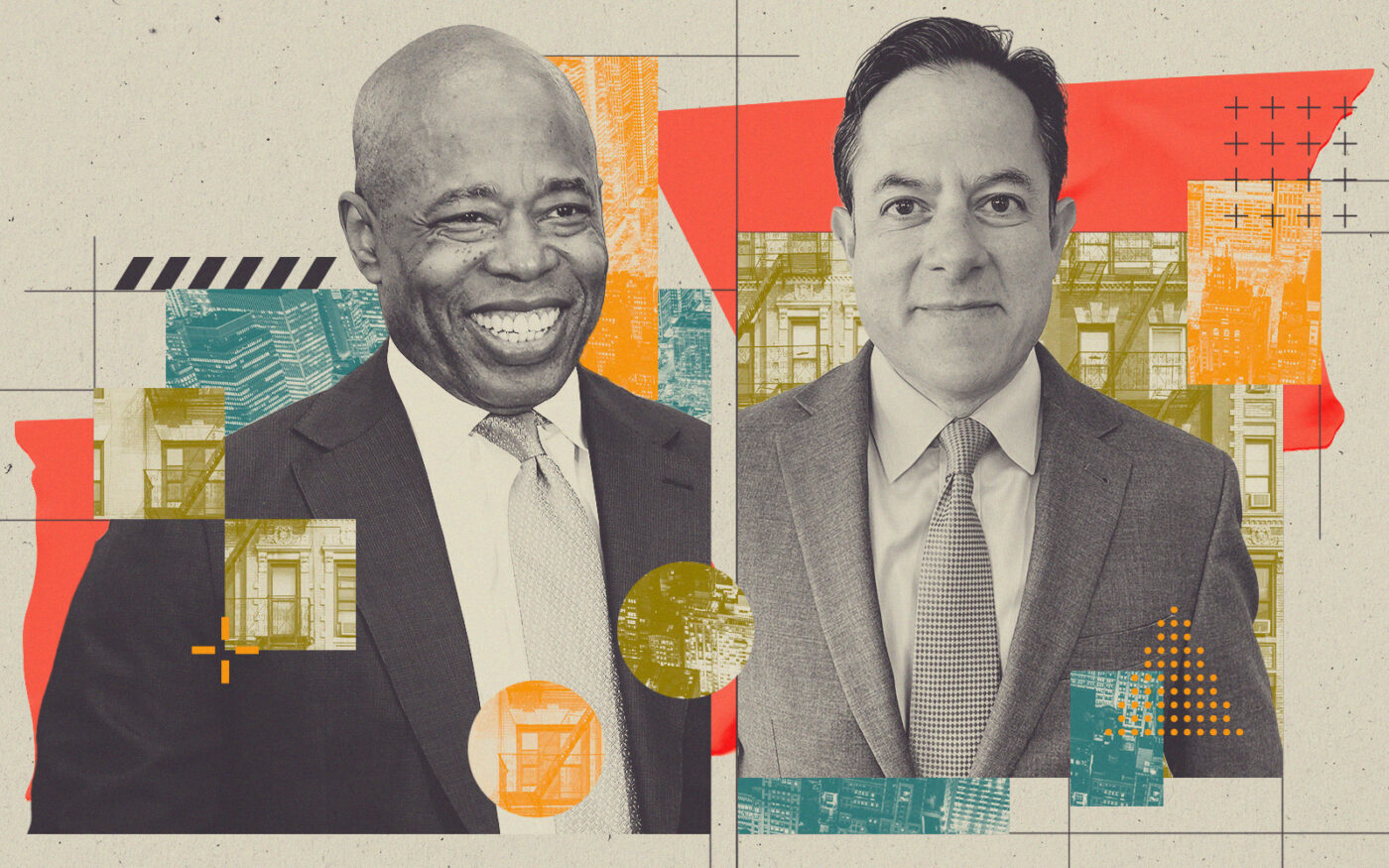 GFP, Metro Loft’s 25 Water Street leads pack of NYC’s largest office-to-resi conversions
GFP, Metro Loft’s 25 Water Street leads pack of NYC’s largest office-to-resi conversions
Adams launches one-stop shop to speed office conversions
Mayor advances effort to allow more such projects as-of-right

Converting a New York City office building into apartments is complicated for many reasons, not least of which is the alphabet soup of city agencies that developers must navigate: DCP, DOB, HPD, LPC and BSA, among others.
Aiming to streamline the process and get agencies on the same page, Mayor Eric Adams on Thursday launched an Office Conversions Accelerator — a one-stop-shop of sorts, with representatives from all of those departments, commissions and boards.
For the acronym-averse, they are the Department of City Planning, Department of Buildings, Housing Preservation and Development, Landmarks Preservation Commission and Board of Standards and Appeals. The new office opened Thursday.
The Adams administration predicted that the Accelerator and two other initiatives trumpeted in a press release would put “millions of square feet of empty offices to better use for New Yorkers.”
The Accelerator “will help building owners map a path to residential conversions and then facilitate the multiagency coordination needed to move through the regulatory processes,” Robert Holbrook, who will lead the program, said in the release.
Holbrook is the executive director of an Adams creation dubbed Get Stuff Built. (There’s apparently no acronym for it yet.)
The other advances touted in Thursday’s release were updates on previously announced efforts. One was a conversion plan within a larger plan that Adams calls the City of Yes. The other was the kickoff of a community process to rezone Midtown South from a predominantly office district into a live-work-play neighborhood.
“These zoning changes will unlock opportunities for building owners and, more importantly, for everyday New Yorkers in need of housing,” Holbrook said.
The changes would make some conversions possible as-of-right, meaning they won’t require approval from the City Council, said Paul Selver, who co-chairs the land use division of law firm Kramer Levin.
Avoiding the political process can save a conversion years and millions of dollars.
“The fact that there are sites outside of Manhattan that are going to be available for conversion will create a more affordable class,” Selver said. Newer buildings will be more difficult to convert, he said, though he sees potential for partial conversions.
The mayor reiterated previously announced plans to rezone Midtown to allow more housing (42 blocks bounded by 23rd Street, 40th Street, Fifth Avenue and Eighth Avenue). As part of a broader zoning text amendment, the city will also seek to expand flexible zoning rules to other parts of the city, allowing office buildings constructed before 1990 to be converted.
One major obstacle for the mayor is that any zoning change to spare projects from the City Council’s gauntlet will itself require City Council approval.
In a best-case scenario for the real estate industry, the community planning process about to begin will build a groundswell of public support that deters the Council from injecting all sorts of mandates that make conversions impossible.
The worst-case scenario is that the process increases demand for such mandates.
City and state proposals this spring to ease conversions failed to gain approval from the state legislature, but even if they had, developers who specialize in conversions said they would not work.
Some builders advised the mayor not to waste time and political capital advocating for them, because developers would not use the programs anyway. Instead, they would continue to convert buildings under existing rules. The problem is, not enough conversions to make a dent in the housing shortage and office glut pencil out.
The mayor’s press release said some of the actions would accomplish what Albany failed to do in the 2023 legislative session, which ended in early June. But the state’s multiple dwelling law still includes requirements for apartment buildings that the city government cannot alter. The state legislature next convenes in January.
Office-to-residential conversions could produce 20,000 homes in the next decade, according to the press release — or 4 percent of the mayor’s “moonshot” goal of 500,000.
“It makes no sense to allow office buildings to sit empty while New Yorkers struggle to find housing,” Deputy Mayor Maria Torres-Springer said in the release. “By enabling office conversions, New York will reinvigorate its business districts and deliver new homes near jobs and transit.”
Kathryn Brenzel contributed reporting.
Read more
 GFP, Metro Loft’s 25 Water Street leads pack of NYC’s largest office-to-resi conversions
GFP, Metro Loft’s 25 Water Street leads pack of NYC’s largest office-to-resi conversions
 Stars aligning for resi conversions
Stars aligning for resi conversions
 Coming soon to Midtown: Office-to-resi conversions
Coming soon to Midtown: Office-to-resi conversions




